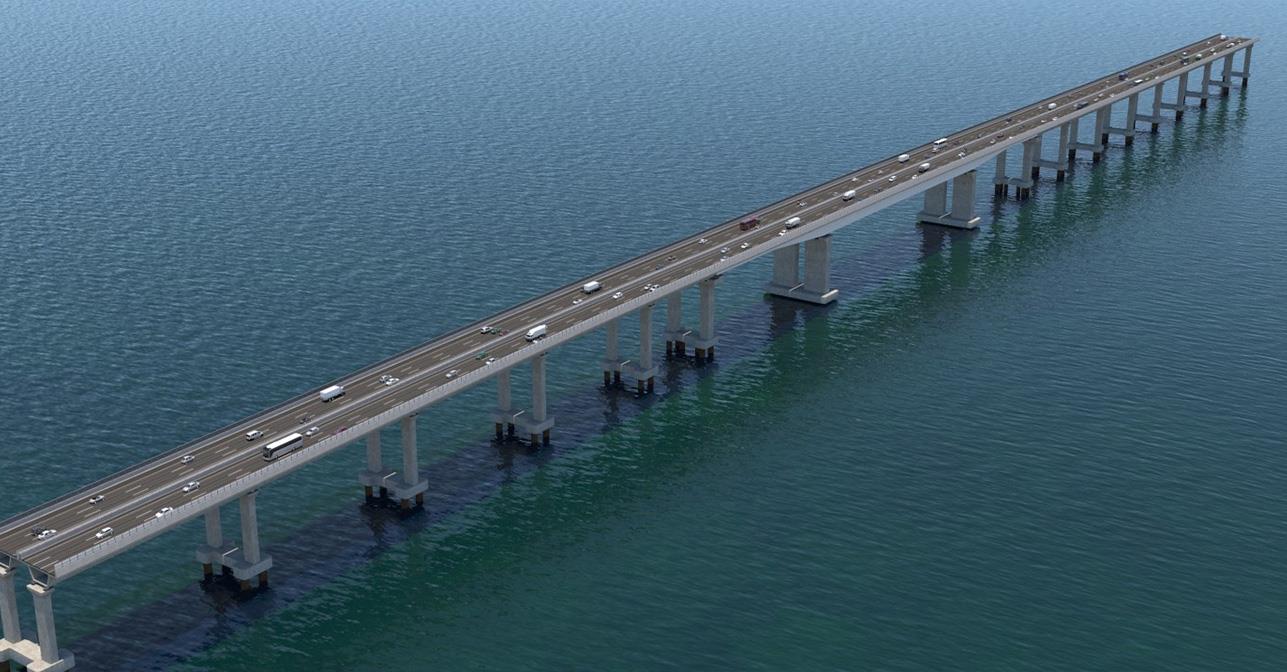
Location
Mumbai, India, Asia
Overview
The longest sea bridge in India, the Mumbai Trans Harbour Link (MTHL) offers convenient connectivity to India’s commercial and financial capital, Mumbai and is expected to serve around 70,000 vehicles every day.
Initiated by the Mumbai Metropolitan Region Development Authority (MMRDA) and funded by the Japan International Cooperation Agency (JICA), this transformative project addresses challenges resulting from the rapid expansion of Navi Mumbai. The 21.8 km sea link offers a strategic solution to enhance traffic flow, reduce travel time, and offer a safe travel option while contributing to sustainability and environmental protection.
The general consultancy services contract was awarded to a consortium consisting of Dar, AECOM Asia, PADECO, and TYLin, collectively overseeing critical aspects of the MTHL project. As part of this consortium, Dar provided design review and site supervision services for this transformational new sea link.
Services
The project
The project involves the construction of a 21.8 km long and 6-lane wide carriageway viaduct across the Mumbai Bay. The MTHL consists about 0.5 km of land viaduct at Sewri, about 16.3km of viaducts over sea/creek and about 4.9 km of viaduct and earth sections on land on Navi Mumbai side.
The project was allotted four packages over three area types - marine, intertidal, and land:
- Package 1: includes the Sewri Interchange on land on the Mumbai side and a 10.380 km marine bridge, comprising foundation and pier components. The bridge spans over the Sewri mudflats, Pir Pau Jetty, and Thane Creek channels.
- Package 2: includes a 7.798 km creek bridge, including foundation and pier, and the Shivaji Nagar cloverleaf interchange and bridge portion across Thane Creek on the Navi Mumbai side.
- Package 3: includes a 3.613 km road bridge and earthworks with viaducts and interchanges at State Highways 52 and 54, and National Highway at Chirle.
- Package 4: covers the establishment of a toll plaza featuring an operation and maintenance centre, along with rescue centres/lay-bys and an administration building. It also includes the implementation of an Intelligent Traffic System and Toll Collection System, street lighting and electrical works, and the procurement of operation & maintenance equipment for the entire Mumbai Trans Harbour Link (MTHL). As an access-controlled road, the MTHL integrates an Advanced Traffic Management System (ATMS), serving as a centralised system for real-time monitoring and management of traffic, incidents, and emergency responses.
Dar’s role included a comprehensive review of the contractors' design submittals for the main structures, encompassing both steel superstructure and concrete substructure. This involved ensuring compliance with the necessary requirements and with industry codes and standards.
The bridge superstructure consists of a combination of prestressed concrete box girders with a typical span of 60 m. In a first for India, the MTHL viaduct also includes orthotropic steel box girders crossing several obligatory navigation channels with the longest span at 180 m. The substructure comprises pier shafts and solid piers supported on piled foundations in the sea and on mostly shallow foundations in land.
Beyond the design realm, Dar’s commitment extended to hands-on site supervision services, including a vigilant oversight of Health, Safety, and Environment (HSE) compliance, rigorous quality control measures, thorough work inspections, and other critical tasks essential for the project’s seamless execution.
The construction was carried out inland in the deep sea which required the assembly of temporary structures including access bridges, floating batching plants, piling gantries and temporary jetties. The prestressed concrete superstructure was assembled using the precast segmental span-by-span construction method. Simultaneously, the steel decks were put in place using the large block erection method, facilitated by barges. Dar ensured that the construction was in strict conformity with the approved method statements and procedures established for the project including the quality assurance plan, safety plan, and environmental management plan.
In addition to these construction processes, the supervision services played a pivotal role in ensuring the project’s sustainability and environmental protection. The focus extended beyond the technical aspects to encompass the delicate ecosystem, including mud fields and the safeguarding of local wildlife such as flamingos. Furthermore, the design itself prioritised resilience, aiming to provide robust infrastructure capable of withstanding natural disasters such as earthquakes and cyclones. The project’s overarching goal, both in design and supervision, was to harmonise infrastructure development with environmental conservation and resilience to ensure a lasting and positive impact on the surrounding ecosystem.
The sea link is expected to reduce travel time between Mumbai and Navi Mumbai to twenty-five minutes from the initial 1 hour 45 minutes travel time. It will also link with other coastal expressways, some of which are under construction. The MTHL, with its forward-looking design and commitment to excellence, symbolises a significant leap forward in India’s infrastructure landscape. As it connects south Mumbai and Navi Mumbai, this sea bridge not only enhances transportation but also contributes to the economic and social development of the region, promising a more connected and sustainable future.
Video
